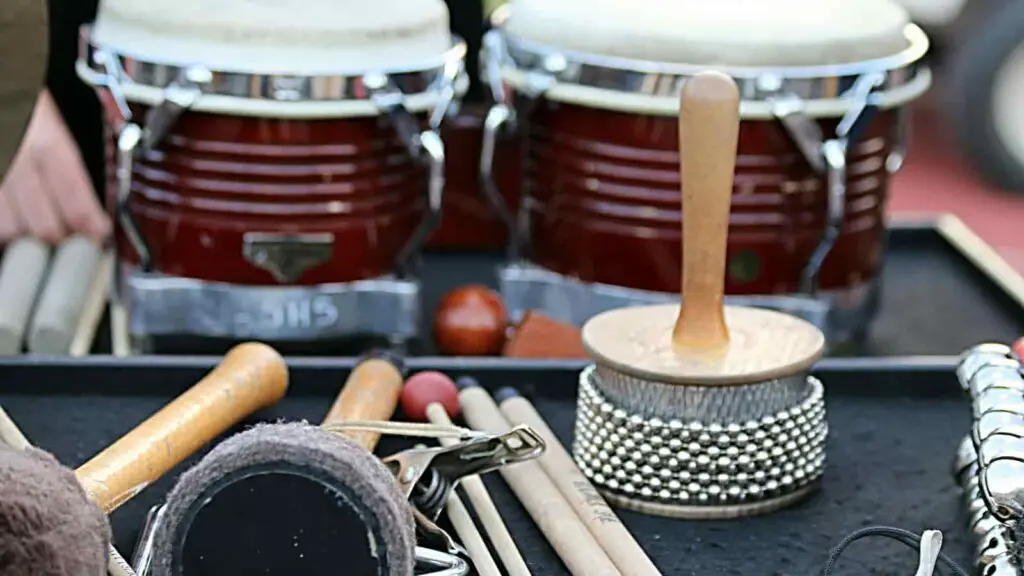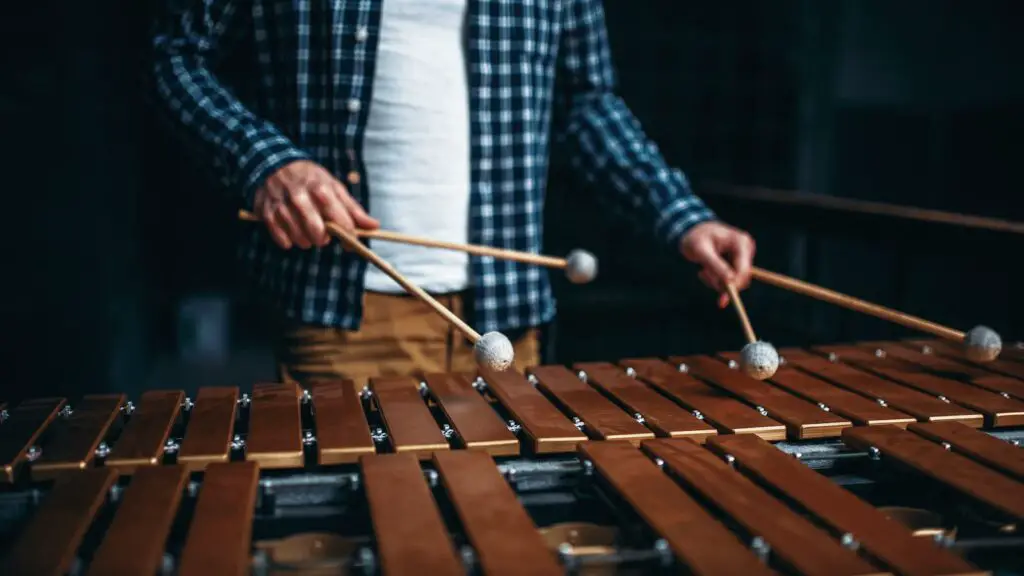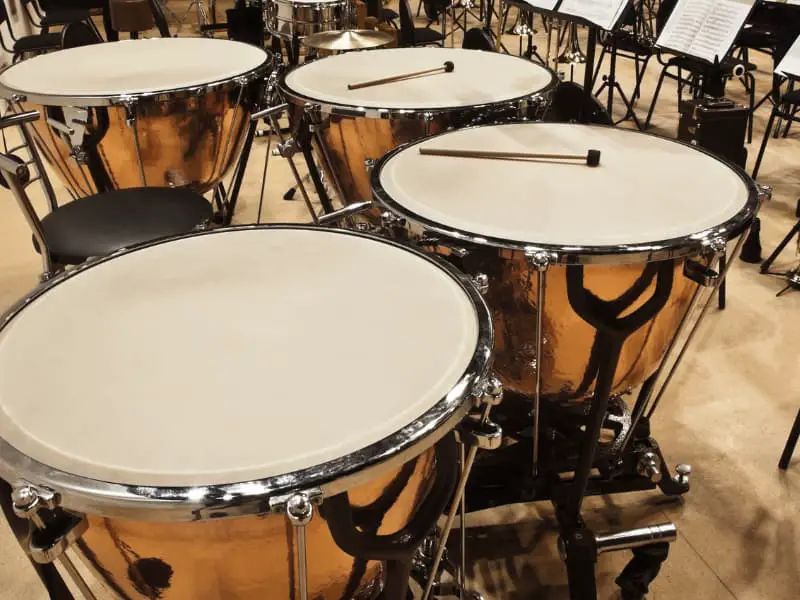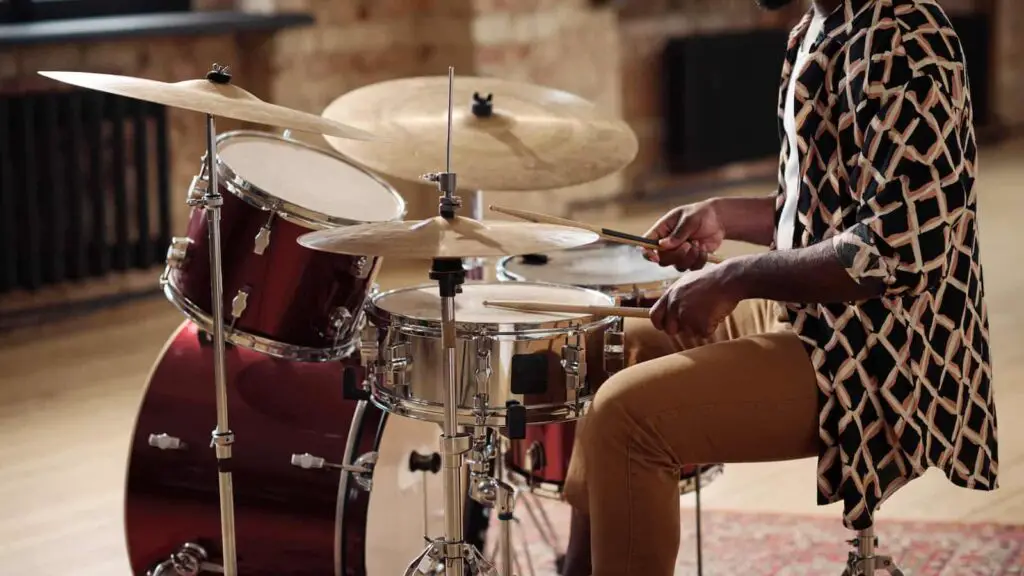Being a percussion player is never boring. There are so many different percussion instruments to learn you have a never-ending arsenal of sounds and instruments to choose from.
If you have learned all the basic instruments and want to learn something more challenging, you may wonder which percussion instruments are the most difficult to learn.

It is tricky to say what is the hardest percussion instrument to learn because there are different types of techniques for virtually all percussion instruments.
Here is a list of six of the hardest percussion instruments to learn and an explanation of what makes them so difficult.
1. Tabla
The Tabla is a pair of drums that originated in India and is used to produce the sounds of regions like Pakistan and Sri Lanka.
The pair of drums are different shapes and sizes.
Typically Tablas are made of wood, covered with a stretched membrane head that includes a hoop with ropes and dowels to create the tuning.
The Tabla player uses the palms of their hands and their fingers to produce multiple varieties of rhythms and sounds.
The written music for Tabla is complex and not usually written in English.
A beginner percussionist is rarely introduced to the Tabla.
The unique method of writing for the instrument and the advanced technique of using both palm and fingers to produce differing tones and rhythms makes the Tabla one of the hardest percussion instruments to learn.
2. Piano
Yes, pianos are considered percussion instruments. Because the sound is coming from something hitting an object (the hammer hitting the string) it is considered percussion.
🎵 Note: Pianos are not only considered percussion instruments, but also string instruments. This is one of the reasons it makes them so complex to classify as well as play.
Piano players understand how to read music that has two staves of Music. To play the piano you must be able to read the music accurately while not looking at your fingers that are depressing the keys.
Some pianos or keyboards have as many as 88 keys, which means there are a lot of opportunities for wrong notes. Many piano pieces have chords or counter-rhythms being played with your left hand while a melody is played with your right hand.
The piano is hard to learn because both hands, and perhaps all ten fingers, are doing something different at all times while you are reading the music but not watching your hands.

The dexterity necessary in players’ fingers, wrists, and hands is what makes the piano one of the hardest percussion instruments to learn.
3. Mallet Instruments (Concert Bells, Xylophone, Marimba, Chimes)
Mallet instruments like the Marimba are hard to play because, like the piano, you have a keyboard-style instrument. The added difficulty is that you are striking each note, or tone bar, with a yarn or rubber mallet.
To play the Marimba or any other mallet instrument, you must use a combination of wrist, arm, and shoulder movements to successfully play the written music in front of you.

🎵 Note: Many mallet pieces are written for more than two mallets. To play a multiple mallet piece you will need to hold two or more mallets in one or both hands. Check out 7 of the Most Famous Xylophone Players Throughout History to see some amazing techniques!
Multiple mallet techniques are very difficult and take a lot of practice. The use of multiple mallets in one or both hands takes years of practice to develop coordination and stamina in your fingers, wrists, arms and shoulders.
Multiple mallet pieces are some of the most technical pieces written for band, orchestra, percussion ensembles, or solo performances.
Learning to use multiple mallets, using advanced dexterity in your hands and arms, and reading complex melodic rhythms is what makes the Marimba one of the hardest percussion instruments to learn.
4. Timpani
The beginner band Timpani (or Kettle Drums) are normally played in a set of two drums but can be increased to four or more drums.
The typical four-drum Timpani set has drum head sizes of 23”, 26”, 29”, and 32”. Some advanced orchestras may add a fifth drum (20”) for higher pitches. The Timpani are different sizes to allow for more pitches or tones.

Each Timpano (a single Timpani is called a Timpano) is equipped with a drum head that can be stretched or released to make a higher or lower pitch. The head is stretched by using a pedal or sometimes a crank.
Pushing the pedal forward (with the front of your foot) stretches the drum head and raises the pitch of the drum. Pushing the pedal backward (with your heel, or the back of the foot) lowers the pitch of the drum.
🎵 Note: The pitches you make by stretching or releasing the pedals correspond to or match certain pitches or tones that the rest of the band or orchestra is playing.
Having up to five Timpano provides a wide range of pitches that can be used to complement the band or orchestra. The tuning of one or all of the Timpani may change multiple times during a performance in more advanced music.
Perfectly matching the correct pitch on each drum and changing it accurately during a musical piece is one of the reasons that Timpani is one of the hardest percussion instruments to learn.
5. The Drumset (or “trap set”)
A drum set uses all both your hands as well as your feet!
It takes a lot of practice, mental focus, and good timing to accomplish the complex rhythms written for band, orchestra, and popular rock or jazz bands.

The drumset is not usually part of the beginner percussionist’s experience, however, finding a private music teacher to introduce some basic coordination around the drumset can prepare the beginner for great opportunities to come.
The required coordination of all four limbs (both hands and both feet) simultaneously is what makes the drumset one of the hardest percussion instruments to learn.
6. Hand Crash Cymbals
You might be tempted to think that anyone can pick up a pair of handheld crash cymbals and play them correctly. You just crash them together right? Wrong. There is definitely a right way and a wrong way to play the crash cymbals.

Remember the mechanical toy monkey that smiles and crashes a pair of cymbals together? That is the wrong way.
The design and basic aerodynamics of the cymbals prevent the cymbals from sounding correctly if you’re just “smashing” them together.
The beginning band student should be taught how to correctly “strike” the cymbals together and then how to position them afterward for the best sound.
Crash cymbals are not always intended to be loud. You can “crash” the pair of cymbals in a way that keeps them soft or medium loud. You can also make a pair of crash cymbals one of the loudest instruments in the band by crashing them powerfully.
Hand crash cymbals are one of the hardest percussion instruments to learn because of the specific way you must hold them, strike them together, and then allow them to resonate.
UP Next:
Being a percussionist is one of if not the most diverse musical roles to fill. Good percussionists need to learn a multitude of instruments, notation, and techniques.
If you are a beginning percussionist then this article will help you up your game. If you are on a budget or If you are a Pro check out these Percussion articles to learn even more!
We hope this article has been helpful and informative for you in your musical journey. Please let us know if there is anything that we could add or change to make this article a better resource for our readers.
Please e-mail us at: [email protected] to let us know how we are doing!
Disclaimer: This post may contain affiliate links. We only recommend high-quality products that are used and recommended by real musicians. If you use these links to buy something we earn a small commission.
